I'm trying to plot log ratios from the range -3 to 3 and want negative ratios to be green and positive to be red, with a log ratio of 0 (center) to be white in color. None of the pre-existing color schemes in matplotlib provide this option, and I haven't been able to figure out how to output a nice gradient manually.
Asked
Active
Viewed 3.5k times
25
-
You could settle for an inverted PiYG colormap (green to pink with white in the middle). – evtoh Jul 07 '16 at 13:31
-
http://matplotlib.org/examples/pylab_examples/custom_cmap.html – user20160 Jul 07 '16 at 13:38
-
1[Beware that](https://matplotlib.org/stable/tutorials/colors/colormaps.html#color-vision-deficiencies) *"the most common form of color vision deficiency involves differentiating between red and green. Thus, avoiding colormaps with both red and green will avoid many problems in general."* – Skippy le Grand Gourou May 03 '21 at 08:14
3 Answers
46
Using matplotlib.colors.LinearSegmentedColormap's from_list method seems more intuitive than some of the other answers here.
from matplotlib.colors import LinearSegmentedColormap
cmap=LinearSegmentedColormap.from_list('rg',["r", "w", "g"], N=256)
Or for more sophisticated tuning:
from matplotlib.colors import LinearSegmentedColormap
c = ["darkred","red","lightcoral","white", "palegreen","green","darkgreen"]
v = [0,.15,.4,.5,0.6,.9,1.]
l = list(zip(v,c))
cmap=LinearSegmentedColormap.from_list('rg',l, N=256)
yoniLavi
- 2,624
- 1
- 24
- 30
ImportanceOfBeingErnest
- 321,279
- 53
- 665
- 712
-
2It feels like this should be the accepted answer! Thank you very much! – Ray Walker Sep 03 '21 at 11:12
-
What command did you use to get this visualization of the colormap ? – kawingkelvin Mar 16 '22 at 22:04
-
1For Ukraine I found the yellow-blue cmap. c2 = ["darkblue","blue","#AAAAFF","white", "#FFFF99", "#FFFF88","yellow"] v2 = [0,.15,.4,.5,0.53,.9,1.] yb = list(zip(v2,c2)) After you create the cmap, you can use cmap.reversed(). For example for a correlation matrix (sns.heatmap(df.corr()) the yellow is above with the first setup not the reversed one. – Arpad Horvath -- Слава Україні Dec 22 '22 at 18:51
8
you can create your own using a LinearSegmentedColormap. I like to set the red and green channels to something less than 1.0 at the upper and lower limits so the colours aren't too bright (here I used 0.8). Adjust that to suit your taste.
See the custom_cmap example on the matplotlib website for further details.
Here's an working example:
import matplotlib.pyplot as plt
import matplotlib.colors as colors
import numpy as np
# This dictionary defines the colormap
cdict = {'red': ((0.0, 0.0, 0.0), # no red at 0
(0.5, 1.0, 1.0), # all channels set to 1.0 at 0.5 to create white
(1.0, 0.8, 0.8)), # set to 0.8 so its not too bright at 1
'green': ((0.0, 0.8, 0.8), # set to 0.8 so its not too bright at 0
(0.5, 1.0, 1.0), # all channels set to 1.0 at 0.5 to create white
(1.0, 0.0, 0.0)), # no green at 1
'blue': ((0.0, 0.0, 0.0), # no blue at 0
(0.5, 1.0, 1.0), # all channels set to 1.0 at 0.5 to create white
(1.0, 0.0, 0.0)) # no blue at 1
}
# Create the colormap using the dictionary
GnRd = colors.LinearSegmentedColormap('GnRd', cdict)
# Make a figure and axes
fig,ax = plt.subplots(1)
# Some fake data in the range -3 to 3
dummydata = np.random.rand(5,5)*6.-3.
# Plot the fake data
p=ax.pcolormesh(dummydata,cmap=GnRd,vmin=-3,vmax=3)
# Make a colorbar
fig.colorbar(p,ax=ax)
plt.show()
tmdavison
- 64,360
- 12
- 187
- 165
-
2I will add that using a green-red colour map is not a great idea as colourblind folks will not be able to interpret your plot! – tmdavison Mar 08 '18 at 16:42
-
Above comment is great advice, quoting [matplotplib’s colormaps documentation](https://matplotlib.org/stable/tutorials/colors/colormaps.html) : *"The most common form of color vision deficiency involves differentiating between red and green. Thus, avoiding colormaps with both red and green will avoid many problems in general."* – Skippy le Grand Gourou May 03 '21 at 08:12
5
How about the following that uses LinearSegmentedColormap:
import matplotlib.pyplot as plt
import numpy as np
from matplotlib.colors import LinearSegmentedColormap
cmapGR = LinearSegmentedColormap(
'GreenRed',
{
'red': ((0.0, 0.0, 0.0),
(0.5, 1.0, 1.0),
(1.0, 1.0, 1.0)),
'green':((0.0, 1.0, 1.0),
(0.5, 1.0, 1.0),
( 1.0, 0.0, 0.0)),
'blue': ((0.0, 0.0, 0.0),
(0.5, 1.0, 1.0),
(1.0, 0.0, 0.0))
},)
plt.imshow(np.array([np.arange(200) for i in range(200)]), cmap=cmapGR)
plt.show()
See e.g. http://matplotlib.org/examples/pylab_examples/custom_cmap.html for more uses and other examples.
jmetz
- 12,144
- 3
- 30
- 41



